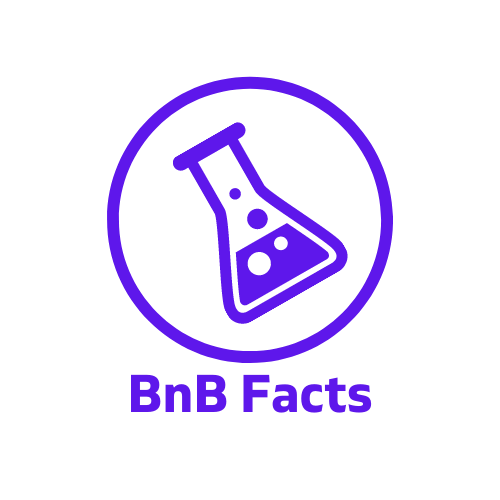What is segmentation
A market segmentation is the process of dividing a large group into smaller groups that share some similarities. These similarities could be demographic, behavioral, or anything else useful. This approach is most used on the end consumer but can have many applications. In general, a segmentation can help a company in everything from strategy to product development.
Airbnb is unique in that, as a marketplace, they have end customers and vendors (hosts). In this analysis, I’ll be proposing a segmentation for Airbnb hosts. Doing so will give hosts a sense of the competitive landscape. In other words, who are hosts competing against for business? We’ll also use this to generate a rough estimate of the value of these segments to Airbnb. Finally, we’ll address the reason for, and implications of, using pre-COVID data for this analysis.
Introduction to the analysis
I won’t get too technical in this write-up. If interested, the full code used and more detail can be found here. Instead, I’ll talk about the approach at a high-level and some of the decisions made.
Selecting the data
I first considered what data to use to perform the segmentation. The COVID-19 pandemic has had such a massive influence on the industry, that data generated during the pandemic would not reflect the normal reality. Having said that, the pandemic may have impacts that permanently change the industry – these will be discussed at the end. For the purposes of this exercise, I decided February 2020 would be appropriate to approximate the pre-pandemic landscape. Data was sourced from Inside Airbnb, an activist project with the objective to provide data that quantifies the impact of short-term rentals on housing and residential communities
Selecting the clustering method
Next, I decided on k-means as the clustering method. This method is most appropriate when using a large dataset as was the case here. It is an algorithmic approach which iteratively assigns observations to predetermined number of clusters (k) by how similar they are (distance to mean). To put it more simply, the algorithm takes a set of observations and a number of clusters as inputs. It then does it’s best to group them on similarity.
Selecting the variables
Any segmentation exercise involves some trial and error, here was no different. I tested many different variables to see if k-means would produce a meaningful segmentation. Having some familiarity with the dataset and some idea of what I wanted to end up with led me to choose the following variables:
- Number of listings
- Acceptance rate
- Response rate
- Minimum nights (averaged from next 12 months at time of data pull)
- Occupancy estimate (estimated days occupied per year)
- Price per person (price/base number of guests accommodated)
K-means does not handle outliers well. Along the way, I discovered two variables were having an outsized influence: number of listings and price per person. In response, I removed these outliers from k-means clustering: hosts with over 30 listings and/or a price per person over $200. In the end, I ended up with seven clusters identified by k-means plus two created from the outliers for a total of nine.
Airbnb host segmentation
Now to introduce the segments. Below is a chart that shows the average of each variable modeled for each segment. Each variable is colored on a gradient to show how the segments are differentiated. I’ve also renamed the segments to something more descriptive.
| Host Count | Avg. Listing Count | Avg. Acceptance Rate | Avg. Response Rate | Avg. Minimum Nights | Avg. Occupancy Estimate | Avg. Price per Person | |
|---|---|---|---|---|---|---|---|
| Full-time Active | 36,510 | 1.67 | 97% | 99% | 4.72 | 59% | $35.99 |
| Management Entity | 720 | 106.09 | 89% | 97% | 7.81 | 20% | $50.76 |
| Full-time Multi-Unit | 3,050 | 12.93 | 92% | 98% | 6.75 | 30% | $42.32 |
| Full-time Luxury | 959 | 8.60 | 80% | 91% | 8.19 | 9% | $568.86 |
| Part-time Active | 48,949 | 1.59 | 93% | 98% | 4.33 | 12% | $36.08 |
| Full-time High-priced | 13,115 | 1.53 | 89% | 98% | 5.12 | 16% | $98.39 |
| Part-time Selective | 11,958 | 1.35 | 36% | 94% | 7.80 | 5% | $48.25 |
| Part-time Passive | 4,995 | 1.31 | 49% | 27% | 8.49 | 7% | $50.35 |
| Full-time Long-term | 767 | 1.87 | 67% | 92% | 133.73 | 24% | $50.88 |
- Full-time active: These are hosts with one or multiple properties that are hosted full-time. They have high response and acceptance rates and offer affordable prices. They represent the second biggest segment by number of hosts.
- Management entity: this segment was created from outliers. I’ve assumed hosts with over 30 listings are management entities. They could range from small to large companies but are unlikely to be (although not impossibly) a sole individual.
- Full-time multi-unit: of the hosts not removed as outliers, a group still pulled apart with a high-number of listings. I’ve assumed that these are individuals with many listings hosted full time.
- Full-time luxury: this is the other segment that was created from the outliers. Hosts with price per person over $200 were labeled luxury. While this segment has a lower estimated occupancy than other full-time segments identified, I’m assuming that’s a function of the high price and lower acceptance rate.
- Part-time active: I’m calling these hosts part-time because of their lower estimated occupancy. But their high acceptance and response rates show that when they are hosting, they are engaging with and accepting guests.
- Full-time high-priced: as with listing count, there was a segment that pulled apart on price even after removing outliers (>$200 per person). This segment has an average price per person around double other non-luxury segments. The same assumptions about luxury hosts were made here; that the price and acceptance rate is depressing estimated occupancy. We’ll consider these hosts full time for the purposes of this segmentation.
- Part-time selective: the low estimated occupancy suggests these hosts are hosting part-time. They also have high response rate but a low acceptance rate indicating they’re active when using the platform, but selective about their guests.
- Part-time passive: this segment has a low estimated occupancy as well as a low acceptance and response rate which indicates they are part-time hosts and not actively managing their account when they do host.
- Full-time long-term: this group pulled apart on a high minimum nights. This segment is using the platform to find guests for stays of multiple months.
Something to note here. A segmentation exercise will always over generalize. As such, a host may not see themselves fitting into any of the segments described above. This is not to say they don’t exist. Rather, they weren’t identified through this exercise for any number of reason. For example, they weren’t differentiated enough from the other segments using the chosen variables.
Value and size of these segments
Now that we have our segments, let’s go a little further with them. We’ll take the segments above and estimate the number of listings they have by multiplying the host count by average listings. We’ll also create a metric called “value”. This will very crudely represent how much revenue or business these segments create for Airbnb. It will be defined as host count x avg. listings x avg. occupancy x avg. price. Given were dealing with a sample of data, it’s best to consider this “value” in relative terms, rather than absolute. This chart appears below. The segments have been sorted by value.
| Host Count | % of Total Hosts | Listing Count | % of Total Listings | Estimated Value | % of Total Value | |
|---|---|---|---|---|---|---|
| Full-time Active | 36,510 | 30% | 60,948 | 20% | $1,875M | 33% |
| Management Entity | 720 | 1% | 76,383 | 25% | $1,448M | 25% |
| Full-time Multi-Unit | 3,050 | 3% | 39,448 | 13% | $845M | 15% |
| Full-time Luxury | 959 | 1% | 8,247 | 3% | $604M | 11% |
| Part-time Active | 48,949 | 40% | 77,717 | 25% | $486M | 8% |
| Full-time High-priced | 13,115 | 11% | 20,040 | 7% | $391M | 7% |
| Part-time Selective | 11,958 | 10% | 16,101 | 5% | $48M | 1% |
| Part-time Passive | 4,995 | 4% | 6,556 | 2% | $27M | 0% |
| Full-time Long-term | 767 | 1% | 1,438 | 0% | $20M | 0% |
Full-time hosts generate most of Airbnb’s value
The first thing that stands out here is the full-time active segment. As mentioned above it’s the second largest segment by number of hosts and this translates to a significant number of listings on the platform. However, with their high estimate occupancy, this is the segment generating the most value for Airbnb.
Next we have the two segments differentiated by the number of listings they had (management entities and full-time multi-unit). They are followed by the full-time luxury segment in terms of value. If we combine these top four segments, they represent 34% of all hosts and 83% of value.
The 80/20 rule
This passes the eye test as it’s within reason of the very common 80/20 rule. That is 80% of an outcome can be explained by 20% of factors. This is true across industries. For example, in healthcare its common for 20% of patients to consume 80% of resources. It’s also very common in business. Here we can see that a relatively small number of hosts drive a disproportionate amount of Airbnb’s business.
Part-time hosts don’t create much value for Airbnb
Further on down we can see that part-time active hosts represent by far the largest segment of hosts, but their value contribution pales in comparison to the segments above. This shows that while many hosts are still using the platform as originally conceived, it’s no longer where Airbnb derives it’s value from.
As we continue down we have segments that don’t align with Airbnb’s core values – that is higher priced, longer stays or passive/selective hosting. It’s no surprise to see then that these segments don’t represent significant value to Airbnb.
Implications for hosts
The segmentation presented here gives us an idea of how Airbnb operates. As such, there are many implications to take away for hosts.

The competitive landscape
The segmentation here allows us to assess the competitive landscape hosts face. Counting all full-time host segments and the management entity segment, we can estimate that 67% of the listings on the platform are being run as full-time businesses. Given these are professional operations, we can assume they are more likely to use cleaning services and host tools such as channel managers. On the other hand we have part-time hosts who represent 32% of listings. We can assume they are likely more do-it-yourself-type hosts given they’re not hosting full-time.
Full-time hosts are critical to Airbnb’s business
The value that the full-time active host segment represents for Airbnb demonstrates how important this segment is to them. It’s also interesting to note how their business model has shifted over time. Originally conceived as a sharing platform, it’s now a business largely driven by hosts operating Airbnbs full-time. This is of course a contentious topic covered extensively elsewhere (including by Inside Airbnb where this data comes from).
Airbnb needs to keep full-time hosts happy
Given how important the full-time host segments are to Airbnb explains a lot of their marketing, policies and programs. The recent “Made Possible by Hosts” campaign was launched to recruit new hosts to the platform. The Superhost program incentivizes full-time hosting behavior with a minimum days hosted requirement. Other policies like the Host Guarentee and Superhost Relief Fund are geared towards appeasing hosts as keeping hosts happy and engaged is critical to their business.
Some hosts are likely prioritized over others
Using this segmentation we can put ourselves in the shoes of Airbnb. Weighing value and internal resources expended allows them to identify which hosts to prioritize. Management entities, full-time multi-unit and luxury hosts generate high value while representing relatively few accounts. As such they likely receive preferential treatment. That leaves the majority of hosts for which they dedicate resources like the Resolution Center. However, again we can look at how much value full-time hosts represent versus how little part-time hosts represent and assume there is a triage system in place to prioritize these hosts and manage finite resources.
Trends that may impact conclusions
The segmentation presented here was generated pre-pandemic. Since then, many factors have developed that may impact this segmentation going forward.

Occupancy has declined during the pandemic
Occupancy has declined over the course of the pandemic. Hosts chose or were forced to shut down or simply received fewer bookings due to the situation. However, there is no reason to expect occupancy won’t bounce back as restrictions ease, vaccines are rolled out and people return to traveling. Therefore this is unlikely to impact the conclusions reached here.
Length of stay has increased
Another trend to watch is an increase in the length of stay. As with occupancy, this is partly a mix of hosts choosing to increase their minimum length and being forced to. However, it is also a function of increasing regulation of Airbnb. New York for example now requires minimum 1 month stays. This could force full-time hosts out (as intended) and refocus some towards long term rentals. Thus this segment may be on the rise with all other segments in decline.
Risk of regulation
The risk of regulation represents an existential threat to Airbnb. As such, they are already starting to maneuver in anticipation of it. A recent change in the fee structure shifts them from the guest to the host. This is meant to mirror how their more traditional competitors operate. With this in mind, we may see the management entity segment grow or a even a whole new segment develop. A change in the proportion of business coming from commercial entities would change the conclusions here.
Key Takeaways
- A substantial portion of Airbnbs value comes from full-time hosts and management entities.
- However, there are still many part-time hosts on the platform. These hosts provide substantially less value to Airbnb
- Airbnb’s reliance on full-time host explains much of their policies and practices.
- Trends that have emerged during the COVID-19 pandemic may further change Airbnb’s business model and the competitive landscape on the platform for hosts.


